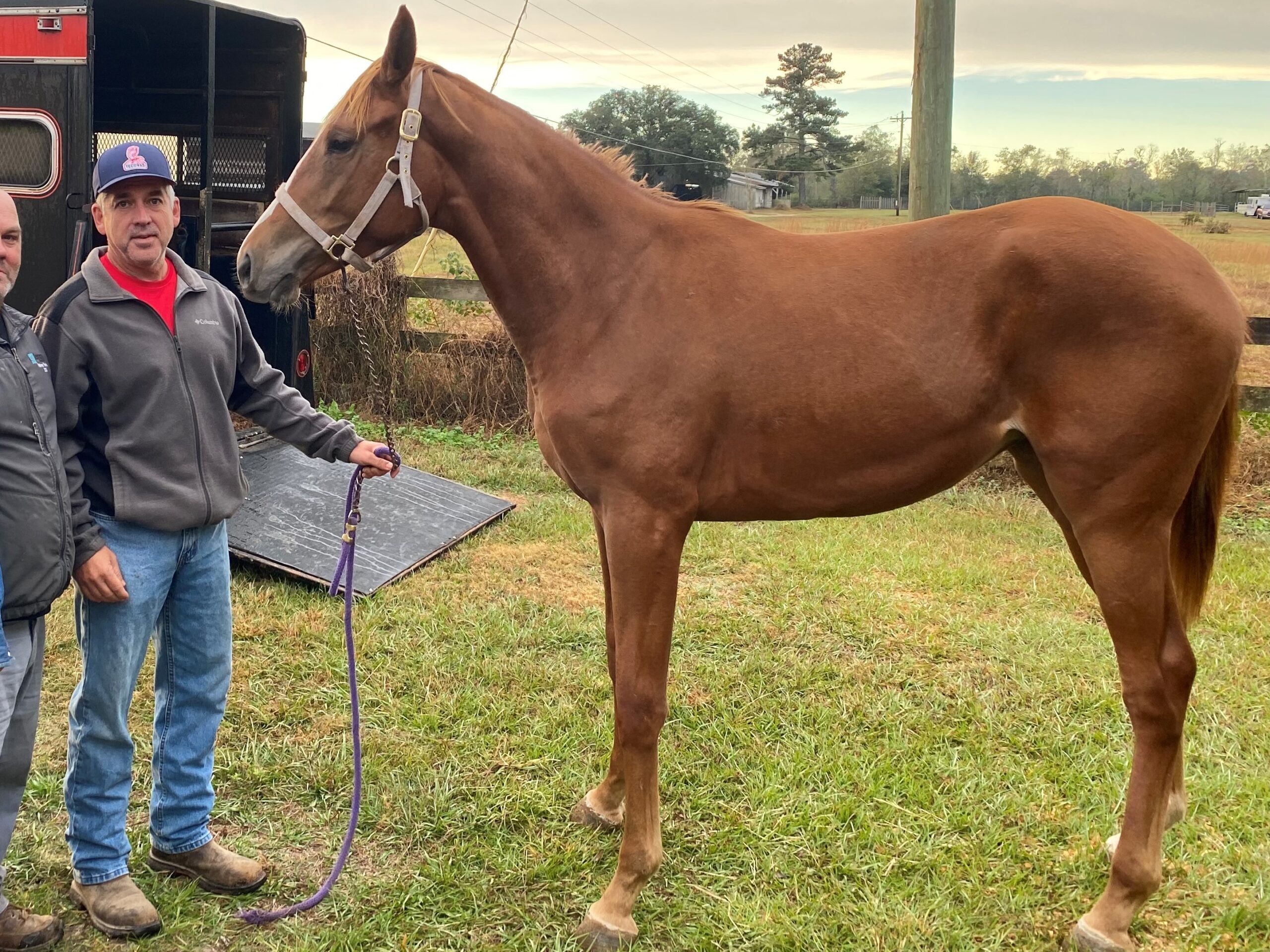Published on: October 24, 2024
Any links on this page that lead to products on Amazon are affiliate links and I earn a commission if you make a purchase. Thanks in advance – I really appreciate it!
As an owner of seven racehorses with over 25 years of experience in the equine world, I’ve witnessed firsthand the challenges that osselets can pose. Osselets, a common ailment affecting a horse’s fetlock joint, can significantly impact a horse’s performance and well-being. This comprehensive guide combines veterinary knowledge and personal experiences to provide valuable insights into osselet causes, symptoms, and treatment.

What are Osselets in Horses?
Osselets are a common condition affecting a horse’s fetlock joint. They occur when the joint capsule is stretched due to excessive stress, often caused by repetitive activities like racing or jumping. This excessive strain can lead to inflammation and bony changes within the joint, resulting in pain, swelling, and lameness.
In the early stages, known as “green osselets,” the fetlock joint is acutely inflamed, characterized by a hot, soft, and painful swelling. The term “green” indicates the recent onset of the inflammation. This early stage is crucial to address, as prompt treatment can often prevent the condition from worsening and developing into chronic osselets with permanent bony changes, which may include bony outgrowths and cartilage damage.
You can learn more about equine anatomy from resources like the American Association of Equine Practitioners (AAEP) website.
Causes of Osselets
- High-Impact Activities: Racing, jumping, and other strenuous activities can place excessive strain on the fetlock joint, making horses more susceptible to osselets.
- Conformation: Horses with certain conformational predispositions, such as straight pasterns or long toes, may be more prone to developing this condition. Research has shown a correlation between specific conformational traits and the likelihood of osselets in racehorses. The University of Missouri’s College of Veterinary Medicine offers informative resources on equine conformation. Horses — Conformation: Form to Function
- Shoeing: Improper shoeing can disrupt the biomechanics of the fetlock joint, increasing the risk of osselets.
- Poor Footing: Exercising on uneven or hard ground can increase concussion and stress on the fetlock joints, contributing to the development of osselets.
Recognizing the Symptoms of Osselets
- Lameness: Lameness, particularly after exercise or on hard surfaces, is a crucial indicator of osselets.
- Swelling and Heat: The affected fetlock joint may exhibit swelling and increased warmth.
- Pain: Horses with osselets may show signs of pain when the joint is manipulated.
- Stiffness: Reduced flexibility and range of motion in the fetlock joint can signal osselets.

Diagnosis of Osselets in Horses
Accurate diagnosis is crucial for effective treatment of osselets in horses. Veterinarians typically employ a multi-faceted approach to diagnose osselets, which may include:
- Physical Examination: A thorough physical exam involves visual inspection of the fetlock joint, palpation to assess swelling and heat, and joint manipulation to evaluate range of motion and identify any pain responses.
- Lameness Evaluation: Observing the horse’s movement at different gaits, on various surfaces, and during specific maneuvers (like lunging or circling) helps identify the location and severity of lameness associated with osselets.
- Diagnostic Imaging: X-rays are commonly used to visualize the bony structures of the fetlock joint, revealing any bony changes, such as osteophytes (bone spurs) or fragmentation, characteristic of osselets. In some cases, additional imaging techniques like ultrasound may be used to assess soft tissues, such as ligaments and tendons, surrounding the joint.
- Nerve Blocks: To pinpoint the source of pain, veterinarians may perform nerve blocks, which involve injecting a local anesthetic to numb specific nerves temporarily. This helps determine if the pain originates from the fetlock joint or other structures in the limb.
Treatment of Horse Osselets
Once osselets are diagnosed, the veterinarian will develop a treatment plan tailored to the horse’s specific needs and the severity of the condition. Treatment options may include:
- Rest and Restricted Activity: Rest is crucial to alleviate inflammation and promote healing. This may involve stall rest, confinement to a small paddock, or controlled exercise.
- Cold Therapy: Applying cold packs to the affected fetlock joint can help reduce swelling and pain.
- Medications: NSAIDs (non-steroidal anti-inflammatory drugs), such as phenylbutazone (“bute”) or flunixin meglumine (“Banamine”), can help manage pain and inflammation. Other medications, such as corticosteroids or hyaluronic acid, may be administered orally or via injection. Always consult with your veterinarian regarding appropriate medications and dosages.
- Joint Injections: Corticosteroid injections into the joint can provide temporary relief. The Veterinary Medicine Extension at Virginia Tech provides information on horse joint injections. Multi-level, aggressive treatments allowed equine patients to recover from debilitating lameness.
- Surgery: In severe cases where conservative treatments are unsuccessful, surgical intervention may be necessary to remove bone fragments, fuse the joint (arthrodesis), or address other joint deformities.
The prognosis for horses with osselets often depends on the severity of the condition and the horse’s response to treatment. Early diagnosis and intervention typically lead to more favorable outcomes.
My Experience with Osselets
Over 25 years of caring for racehorses, I’ve encountered and successfully managed osselets in several horses. One memorable case involved a four-year-old Thoroughbred who developed osselets after an intense race. Through a combination of rest, cold therapy, medication, and a carefully managed rehabilitation plan, this horse fully recovered and even won a race, highlighting the potential for successful treatment and recovery.

Preventing Osselets
While not all cases are preventable, these measures can help reduce the risk of osselets in horses:
- Proper Conditioning: Ensure your horse is adequately conditioned for their activities.
- Corrective Shoeing: Regular farrier care and proper shoeing are vital for maintaining healthy fetlock joints.
- Early Intervention: It is crucial to promptly address any signs of lameness or discomfort by seeking veterinary advice, as early intervention often leads to a more favorable prognosis.
Additional Tips for Horse Owners
- Maintain a Healthy Weight: Keeping your horse at a healthy weight minimizes stress on their joints.
- Provide Adequate Footing: Ensure your horse exercises on suitable surfaces to reduce concussion on their joints.
- Warm-up and Cool-down: Proper warm-up and cool-down routines are essential for joint health.
- Use Fetlock Boots: Fetlock boots protect your horse’s fetlock joints from impacts and injuries during exercise or turnout.
- Regular Veterinary Check-ups: Schedule regular veterinary check-ups, including lameness evaluations, to monitor your horse’s joint health and detect subtle signs of osselets or other concerns.
- Consider Insurance: Equine insurance, such as major medical or surgical coverage, can provide financial protection if your horse develops osselets or requires treatment for other health problems.
- Consistent Exercise: Maintain a consistent exercise routine to keep your horse’s joints conditioned and reduce the risk of injuries.

What are osselets in horses?
Osselets are a type of arthritis that affects the fetlock joint in horses. They are characterized by inflammation, bony changes, and potential cartilage damage within the joint. This can cause pain, swelling, and lameness, particularly noticeable during or after exercise.
What causes osselets?
Osselets often result from repetitive stress and trauma to the fetlock joint, commonly seen in horses involved in high-impact activities like racing and jumping. Conformation, improper shoeing, and poor footing can also contribute to their development.
How do I know if my horse has osselets?
Common signs of osselets include lameness (especially after exercise or on hard surfaces), swelling in the fetlock joint, heat in the affected area, pain upon joint manipulation, and stiffness or decreased range of motion.
How are osselets diagnosed?
Veterinarians typically diagnose osselets by combining a physical exam, lameness evaluation, and diagnostic imaging like X-rays. Sometimes, they may also use ultrasound or nerve blocks to aid in diagnosis.
What are the treatment options for osselets?
Treatment varies depending on the severity and may include rest, cold therapy, medications (such as NSAIDs), joint injections, and in more severe cases, surgery.
Conclusion
Osselets can be a significant concern, but with vigilance, proactive care, and prompt veterinary attention, your equine companion can overcome this condition and enjoy a long and active life. By understanding the causes, symptoms, and treatment options and by prioritizing preventative measures, you can help your horse maintain optimal joint health and continue to thrive. The United States Department of Agriculture (USDA) offers resources for further information on equine health topics.
If you suspect your horse may be showing signs of osselets, don’t hesitate to contact your veterinarian for a thorough evaluation and personalized treatment plan.
Disclaimer: While this article provides information based on personal experience and research, consulting with a qualified veterinarian for accurate diagnosis and a tailored treatment plan for your horse is essential. The information presented here should not be considered a substitute for professional veterinary advice.

About the Author: Miles Henry
Lifelong Horseman | Racehorse Owner | Published Author
Miles Henry brings over 25 years of hands-on experience training and owning Thoroughbred racehorses. Raised with Quarter Horses and Appaloosas, he’s spent a lifetime learning from horses—on the track, in the barn, and in the field. Today, he runs a small but successful racing stable in Louisiana and shares real-world insights on HorseRacingSense.com, helping horse owners, fans, and bettors navigate the sport with confidence.
📚 Books: View Miles’s books on Amazon »
🎧 Podcast Guest: Animal Tales Ep. 32 |
YouTube Interview
📩 Newsletter: Sign up for racing tips and horse care advice »
🔗 Follow Miles:
Twitter |
Facebook |
YouTube

